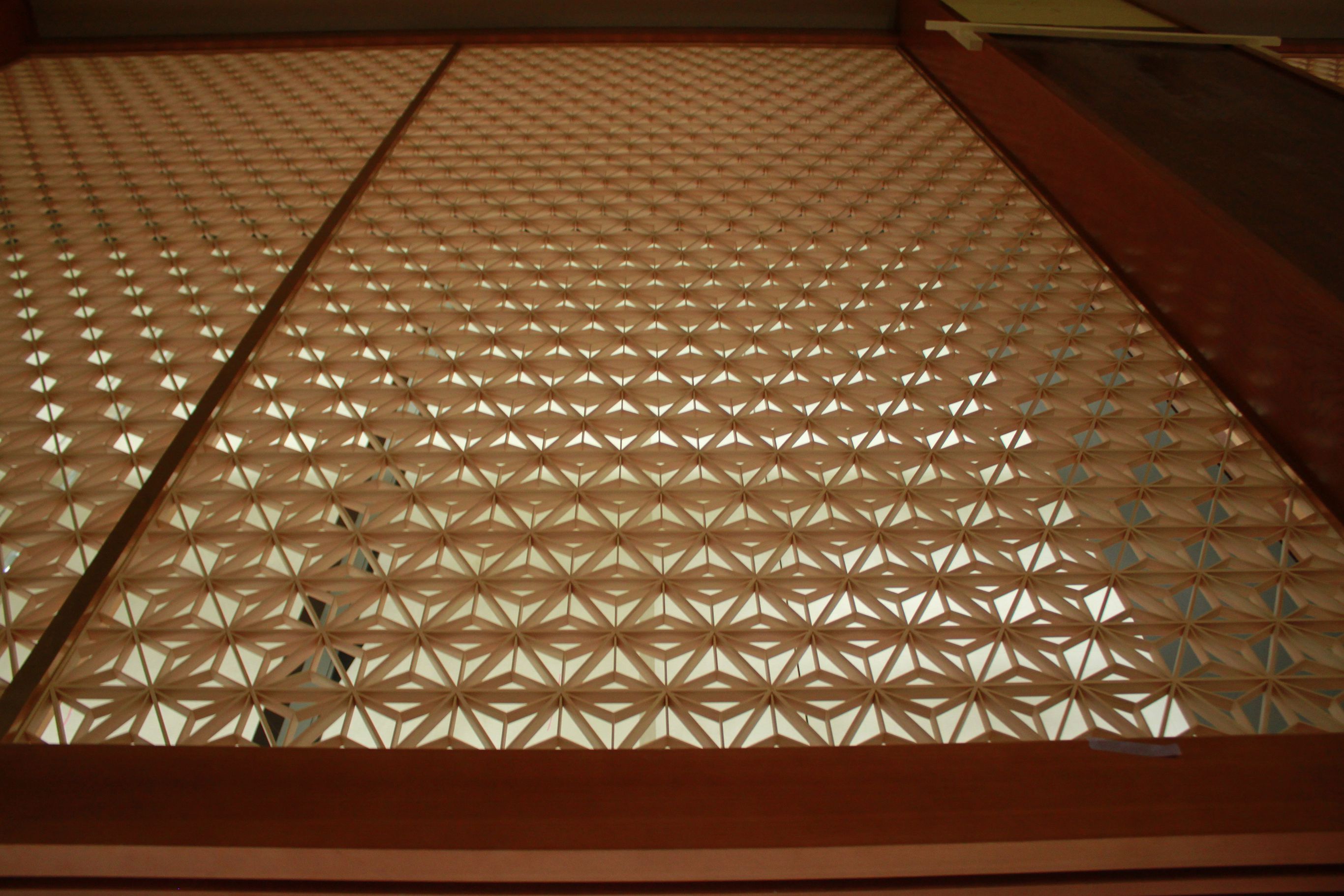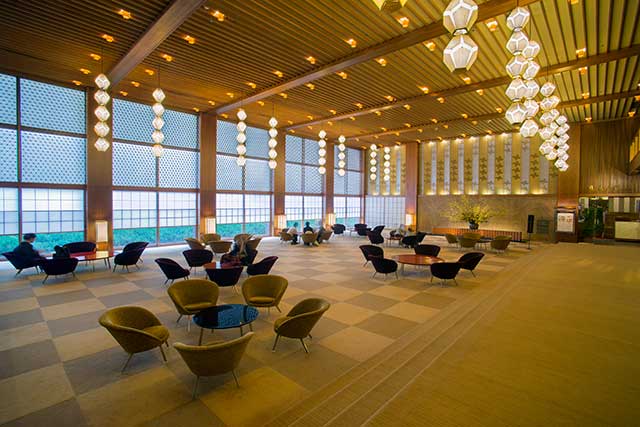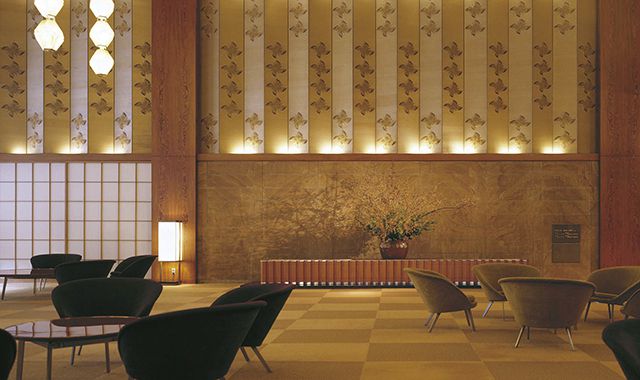Applying the Okura Family Emblem and Japanese Patterns as Designs
During the 19th century, the western world was deeply inspired by the Japanese creativity with abstract expression which captured the fine details of beauty in the nature. These aesthetic senses can be observed from the Japanese Monyou (Patterns) which was used at the former main building, known as the Japanese modern masterpiece.
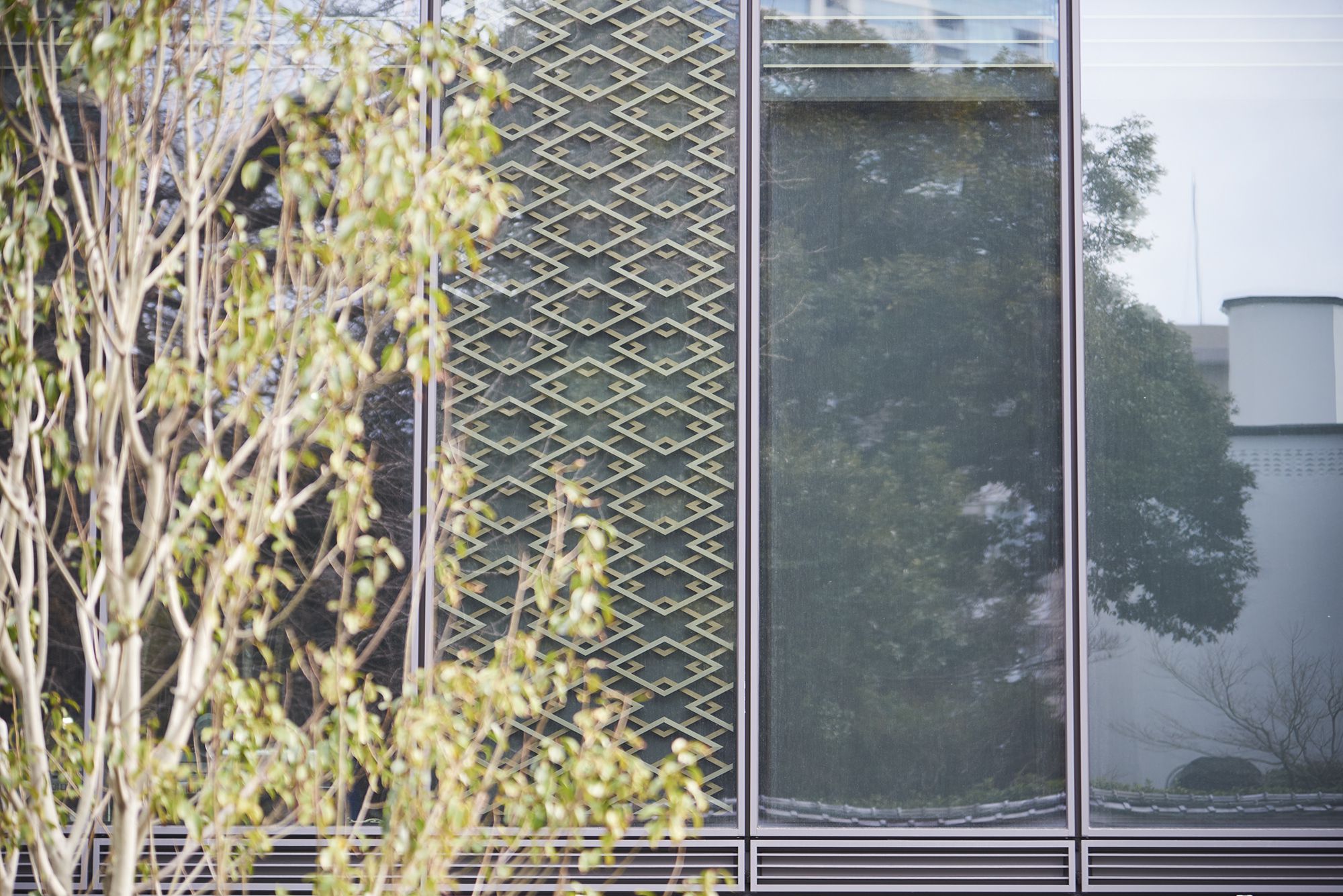

The Hishimon is applied on the Hotel Entrance
The Hishimon (Diamond Patterns), applied on the hotel entrance, is an important design for the Okura. The design originates from the Okura family’s emblem, Gokaibishi (Five-Layered Diamonds), and is said to be derived from the shapes of floating water chestnuts on the lakes, ponds and rivers. New combinations of Hishimon have continuously been created up to this date. Yoshiro Taniguchi, the designer in charge of the interiors have also applied the patterns on to the lobby elevator doors as well.
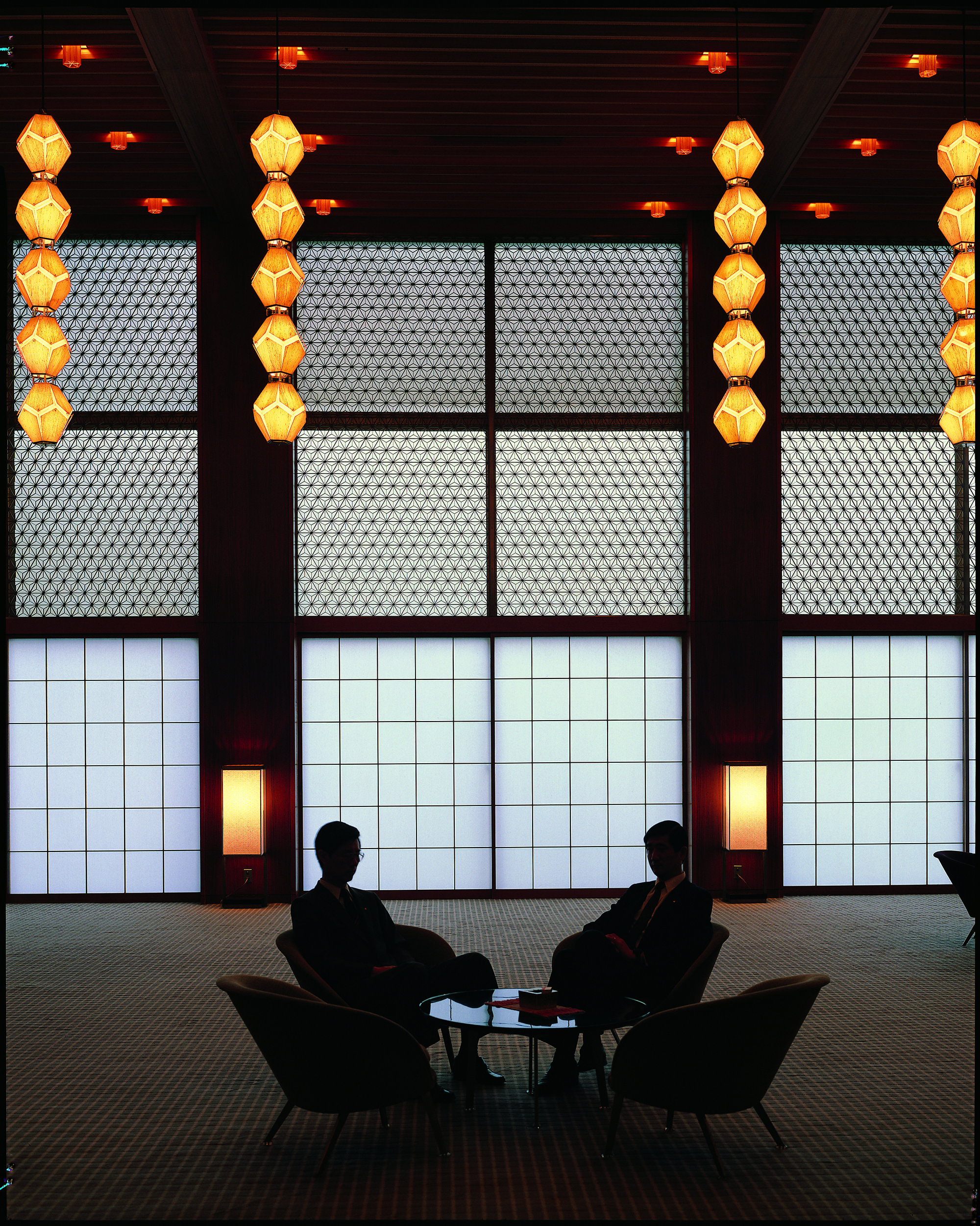

The Asanoha-Monyou Kumiko at the Former Main Lobby
Another nature-derived pattern used in Okura is the Asanoha-Monyou (Hemp Leaf Pattern) which was applied on the former main lobby and will reappear at the new lobby of Okura Prestige Tower. The pattern was selected out of more than 200 diamond patterns and represents good fortune and has long been beloved by the Japanese people. Famous Japanese artists such as Katsushika Hokusai and Kitagawa Utamaro often chose the pattern when painting the women’s kimonos.
Asanoha-Monyou have often been applied in Japanese houses in parts such as Ranma (Screens above the partition) and Shoji (Sliding Doors used for partition). In the case of Okura, they applied the pattern onto the main lobby’s large Shoji using Kumiko (Muntin Joiner), which is a sophisticated technique of assembling wooden pieces solely by hand without the use of nails, wood chips or glue. Okayama Prefecture’s Sada Kenbi will be in charge to produce the Okura Prestige Tower’s Asanoha-Monyou using the Hinoki Wood over 200 years old.
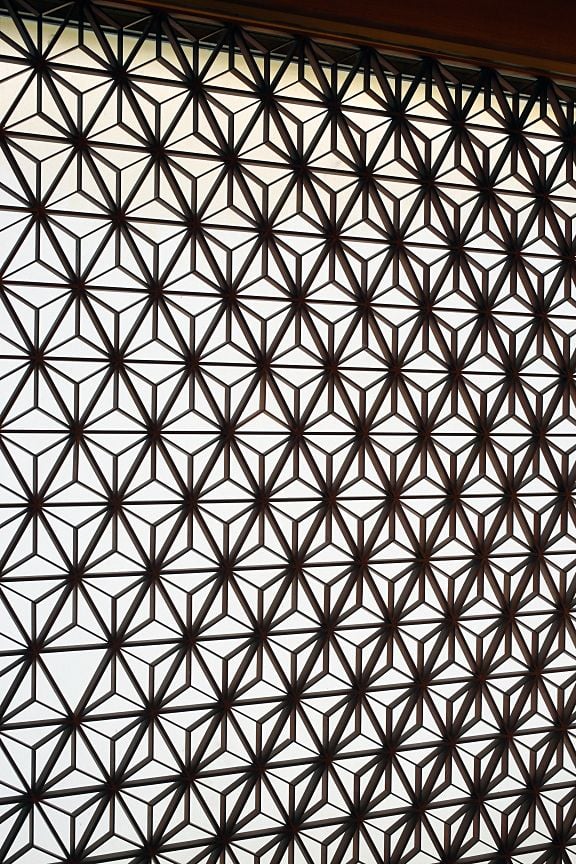

The Asanoha-Monyou Kumiko
By looking closely at the Kumiko, one can observe the remarkable skills that went into the production. Each vein of the leaves are set to 3 millimeter below the outline of the leaves, in order to create a three dimensional expression based on the angle seen. The new Kumiko will use the same skill to create this sophisticated angularity.
The precious craft works and decorations carried on through the ages will be arranged at its place of The Okura Tokyo. The Okura’s spirit and the Japanese creativity with fine details and freedom will continue to enrich and inspire the people’s heart towards the future.
The Hishimon will be arranged on the exterior walls between the guest rooms. The Asanohamonyou-Kumiko will be arranged at the 5th floor lobby of the Okura Prestige Tower.
The Okura Tokyo
http://www.hotelokura.co.jp/tokyo/toward2019/
Photography by © The Okura Tokyo
Stories
Premium X
The Decorations to Discover the O…
Premium X
